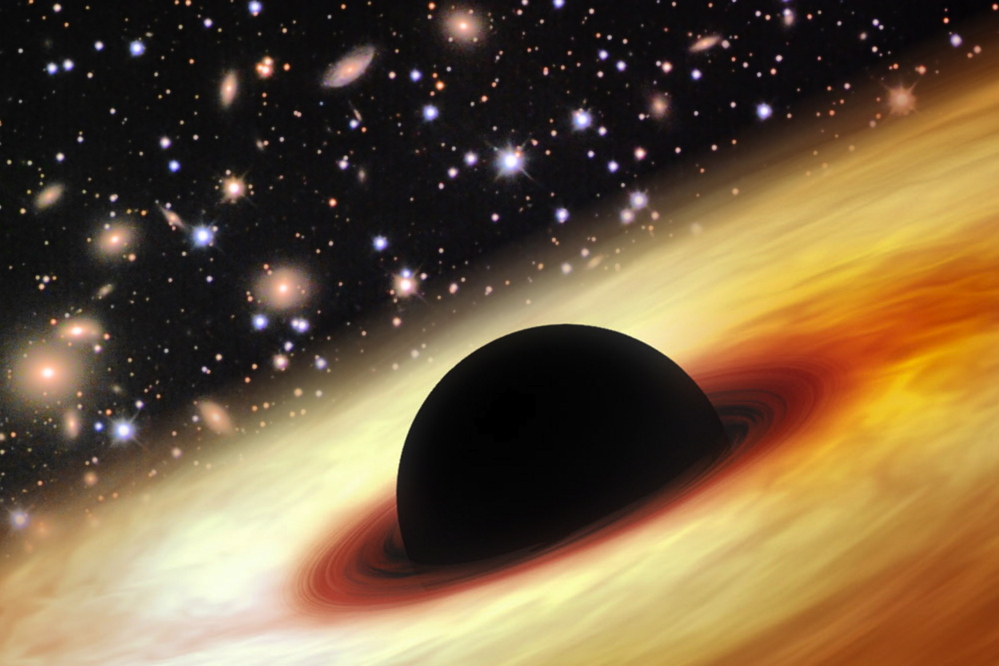Some 12.8 billion light years away, astronomers have spotted an object of almost impossible brightness — the most luminous object ever seen in such ancient space. It’s from just 900 million years after the big bang, and the old quasar — a shining object produced by a massive black hole — is 420 trillion times more luminous than our sun.
That brightness and size is surprising in a black hole from so close to the dawn of time. In a new study published Wednesday in Nature, researchers describe a cosmic light that defies convention. It was even detectable with a relatively small telescope, though researchers in China did have to ask for help from astronomers in Chile and the United States to get a higher-resolution look.
“How could we have this massive black hole when the universe was so young? We don’t currently have a satisfactory theory to explain it,” said lead author Xue-Bing Wu of Peking University and the Kavli Institute of Astronomy and Astrophysics.
For the black hole to grow to such a staggering size in less than a billion years, the astronomers posit, it must have been pulling in interstellar mass from its surroundings at the maximum rate the whole time. Even so, the radiation of the quasar formed by the black hole should have started to limit that mass accumulation before such a size was reached.
So there are puzzles left to be solved. But for now, Wu said, his team is using the brilliant quasar as a beacon to find other space objects.
“Just like a lighthouse sitting in a dark, distant universe,” he said, “it gives us a chance to see things in between our own planet and the black hole by illuminating them. It provides a unique chance to understand things between the distant galaxy and ours.”
Wu and his team have many follow-up observations planned for the coming year, including projects using space telescopes like the Hubble to get an even better look at things in and near this impressive quasar’s galaxy.
Send questions/comments to the editors.



Comments are no longer available on this story